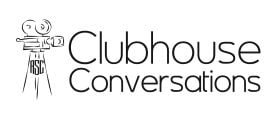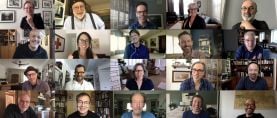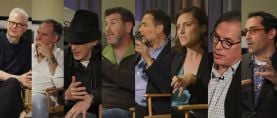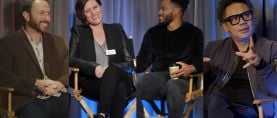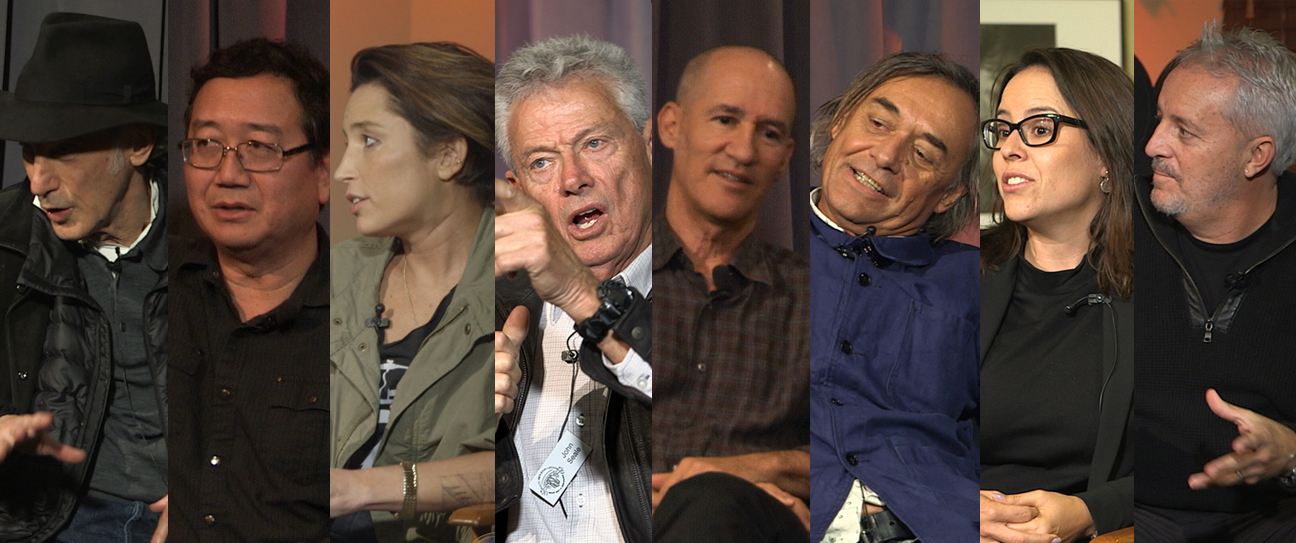
ASC Breakfast Club 2015 Video Collection
In-depth live interviews at the ASC clubhouse with ASC members Michael Goi, Reed Morano, John Seale, Roberto Schaefer, Dariusz Wolski and Checco Varese.
These videos are exclusive to Friends of the ASC.
The ASC Breakfast Club is a series of in-depth interviews conducted in front of a live audience in the Society's historic Clubhouse. ASC members share their inspirations and experiences while analyzing their own work and offering an informative look at their decision-making process.
2015 Breakfast Club participants: Ed Lachman, Michael Goi, Reed Morano, John Seale, Roberto Schaefer, Dariusz Wolski and Checco Varese.
Previous Collections
2020 | 2019 | 2018 | 2017 | 2016 | 2015 | 2014 | 2013 | 2012 | 2011
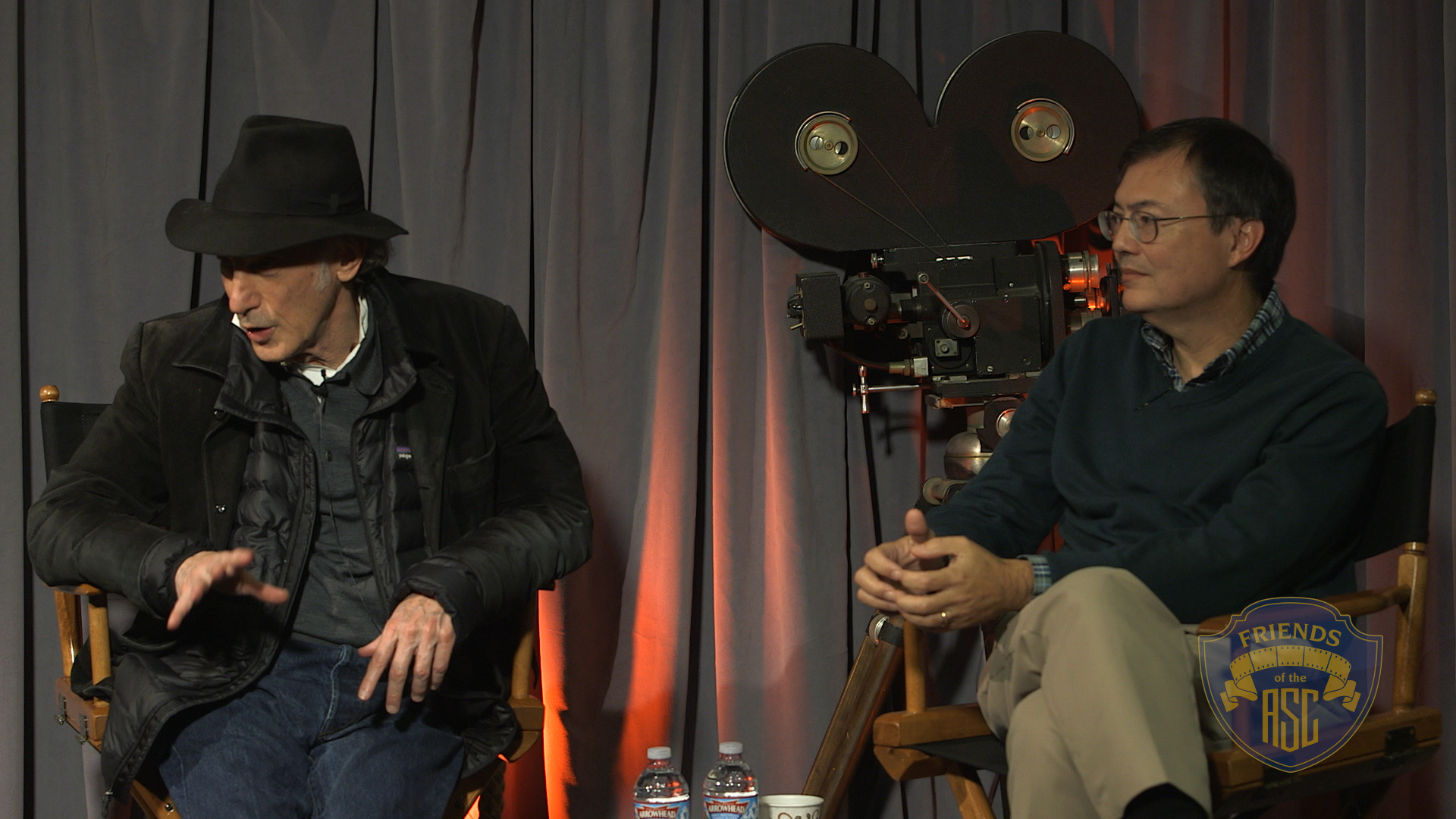
In an interview with fellow ASC member David Mullen, Lachman discusses his work on the film Carol.
Ed Lachman’s credits include Carol, The Limey, The Virgin Suicides, Erin Brokovich, Sweet November and I’m Not There. He earned ASC and Emmy Award nominations in 2012 for his work on the HBO mini-series Mildred Pierce. In 2003 his outstanding cinematography on the film Far From Heaven received both ASC and Academy Award nominations, and in 2016 he received the ASC Lifetime Achievement Award.
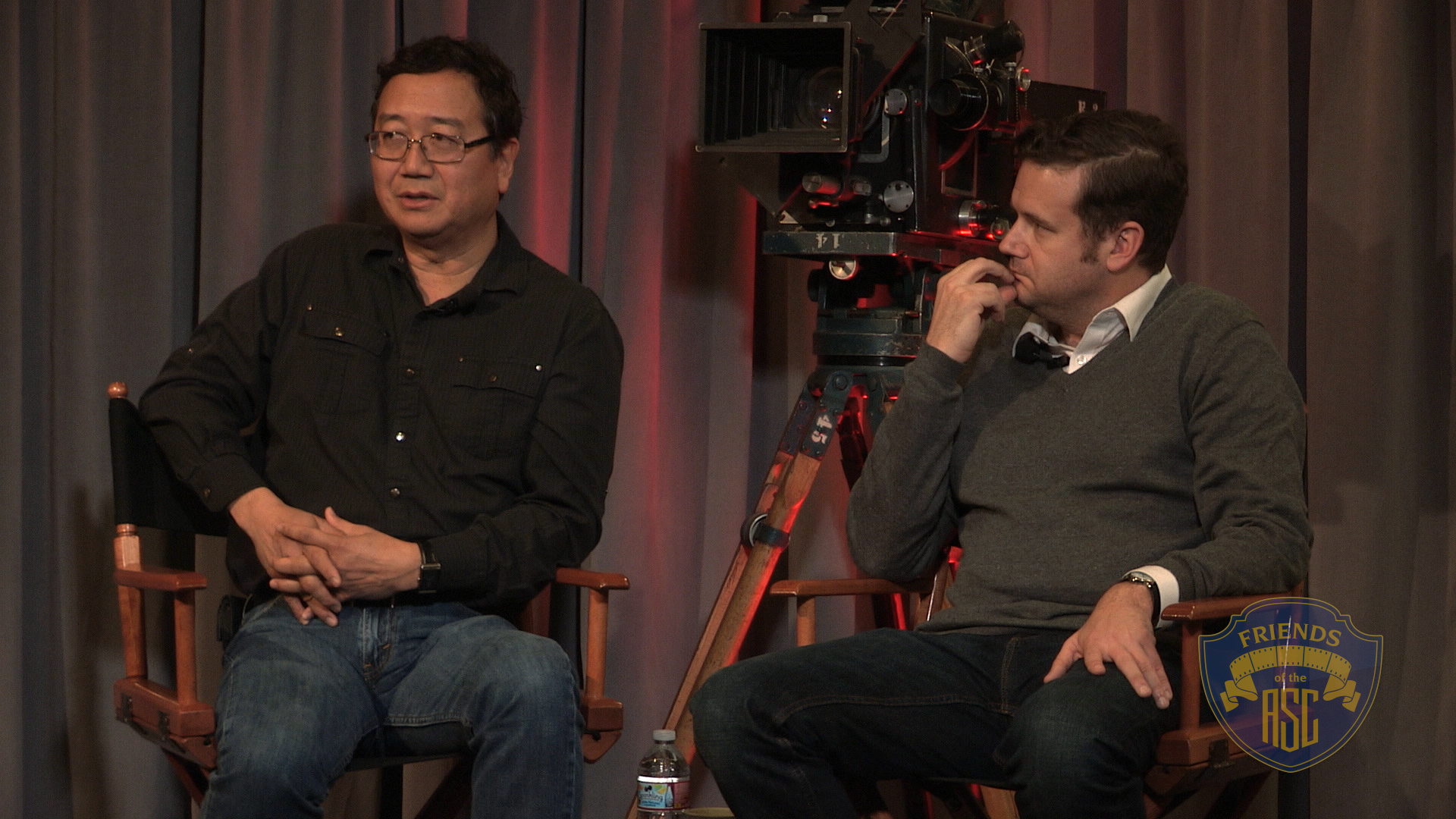
Goi explains how he became involved in American Horror Story during the show’s first season, which was kicked off by cinematographer John Aronson, and discusses working with director Alfonso Gomez-Rejon on the second season of the show, which was influenced by the Technicolor classic Black Narcissus, and explains how point-of-view was key to his lighting approach, and how his seasoned crew helps him create a polished look “on the fly,” and discusses the importance of allowing other cinematographers artistic license when they come onto the show.
He explains why shooting American Horror Story on film is a good choice both creatively and logistically, noting, “Film has always been the fastest way for me to work.” He discusses the show’s “brilliant” production designer, Mark Worthington, whose work on the third season included the creation of a house with a completely white interior, how he and series creator Ryan Murphy referenced filmmaker Douglas Sirk in developing the look for the show’s fourth season, which is set in a carnival in the 1950s, and how he strives to give each director creative input while maintaining the visual consistency an episodic series requires.
- Introduction
- American Horror Story: Asylum
- Shooting on Film
- American Horror Story: Coven
- American Horror Story: Freak Show
- Working with the Director
- Controlled Chaos
- More on AHS: Freak Show
- Q&A 1
- Q&A 2
Born and raised in Chicago, IL, Michael Goi, ASC, ISC, earned a bachelor’s degree in film from Columbia College before launching his career with documentaries such as Wrapped in Steel and Fired Up! The Story of Public Housing in Chicago. He has been the director of photography on FX’s American Horror Story since 2011, and he is an Emmy nominee this year for an episode of AHS: Freak Show. His credits also include the series Salem, Glee and My Name Is Earl.
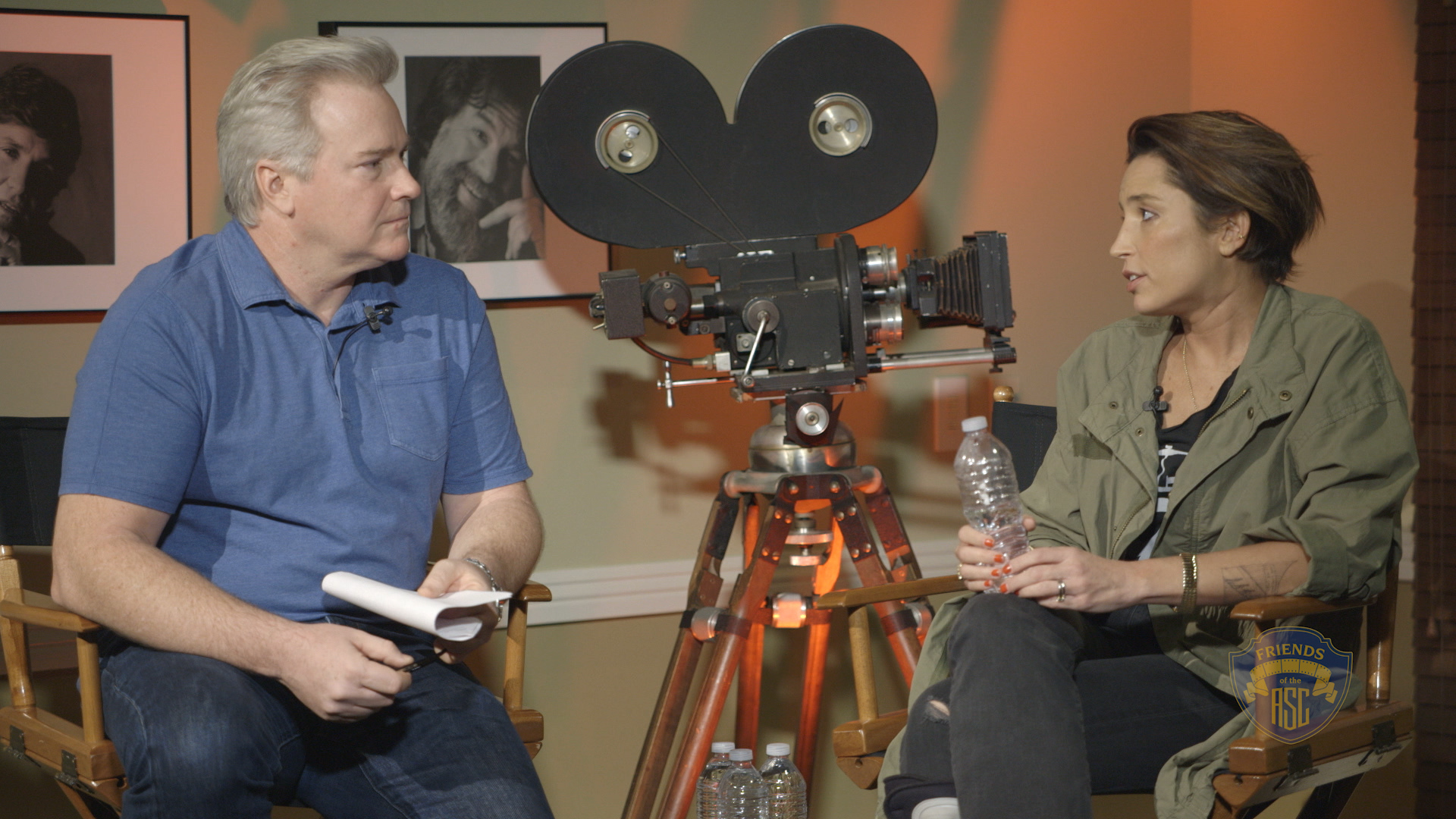
Morano talks about her background, education and training as a cinematographer, and explains how she prepared to direct and shoot Meadowland, why she decided to also photograph Meadowland and what implications that had for the production, dealing with her cast and being in tune with their performances, her initial approach to the original script and creating a visual approach and largely shooting the picture handheld, how she utilized the DI process to enhance the emotion of the images and story, and how the production design and costuming helped establish the look of the project. She also digs into the decision to shoot in anamorphic, and describes establishing a cohesive look for the film.
Along with detailing the creative challenge of directing and shooting a picture, Morano how the combination worked hand-in-hand with the story and characters, and how she benefitted from strong crew support. She also discusses her status as a role model for other filmmakers; casting and working with her actors; the challenges of directing, shooting and operating; her approach to rehearsals and blocking; and how she balances her work and home life as a filmmaker and mother; her thoughts on being one of the youngest members of the ASC; and transitioning from cinematographer to director.
- Getting Started
- Deciding to Direct
- Conceiving Meadowland
- Shooting & Directing a Film
- Using DIs
- Establishing a Look
- Examining Meadowland Clip
- Working with Actors
- Q&A Part 1
- Q&A Part 2
- Q&A Part 3
Born in Omaha, Nebraska, Reed Morano’s interest in still photography led her to apply to film school at NYU's Tisch School of the Arts. She worked as a camera assistant throughout college, before moving into grip and electrical departments after graduation. After gaining experience by shooting dozens of shorts, hundreds of hours of reality programming and numerous documentaries, she photographed her first feature, Frozen River, in 2008. She went on to shoot the features Kill Your Darlings, Autumn Blood, Little Birds, The Skeleton Twins, War Story, And So It Goes and The Magic of Belle Isle. Morano made her directorial debut with the indie drama Meadowland — which she also photographed — and is also known for her work in the HBO series Looking. She recently completed shooting episodes of the upcoming Terence Winter/Martin Scorsese/Mick Jagger HBO series Vinyl, and is also one of the youngest members of the ASC.
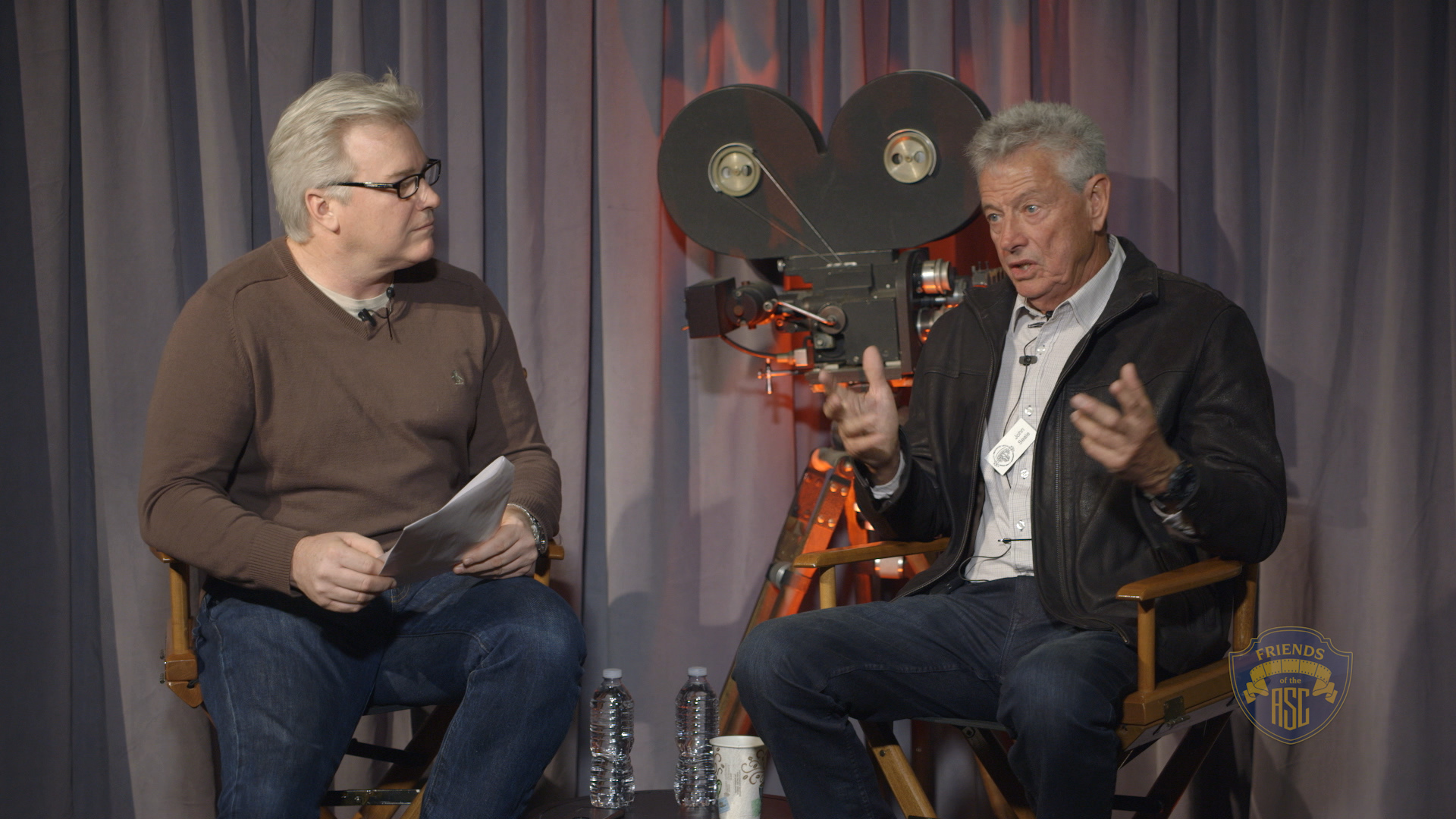
Seale discusses how his early career working for a local news station led him to shooting cinema features, how he developed his understanding of lighting, and his experience shooting his first “Hollywood” movie – Witness, which earned him his first Academy Award nomination, reveals that he used only 1 light for a pivotal scene in Rain Man, and how a writers’ strike dictated his choice to use multiple cameras, which is part of his signature style to this day. He explains his minimal lighting choices and how he created a makeshift flare for The English Patient, discusses his experience working on a VFX heavy film for the first time, and how a reputation for keeping on schedule got him other jobs.
He explains director George Miller’s bold choice to center frame Mad Max: Fury Road to accommodate the fast-paced editing for the action flick, comments on the director’s decision to switch from shooting in 3D to 2D, and discusses how his close relationship Panavision helped ease his transition from shooting on film to digital, describes Miller's decisions about what could be 'fixed in post', how he incorporated visual effects to create the final look of the film, and how convinced Miller to shoot the film with multiple cameras. Seale reveals that for a majority of the film, the vehicles were not moving during the many chase scenes, details how the original rigging created for the 3D cameras were effectively used on the 2D cameras, and how he integrated the smaller Canon 5Ds, Olympus DSLRs and Black Magics into the camera package as “crash cameras”, and explains how his day for night work was dictated by logistics and a schedule change, and why it was necessary to overexpose by two stops rather than underexpose to give a “suggestion” of night.
- Early Career
- First Hollywood Job
- Rain Man
- The English Patient
- The Perfect Storm
- 3D and Mad Max: Fury Road
- Framing in Mad Max: Fury Road
- The Look of Mad Max: Fury Road
- Multiple Cameras in Mad Max: Fury Road
- Chase Scenes in Mad Max: Fury Road
- Camera Rigging in Mad Max: Fury Road
- Day for Night in Mad Max: Fury Road
- Shooting in a Cab for Mad Max: Fury Road
- Q&A 1
- Q&A 2
- Q&A 3
John Seale’s notable credits include this summer’s blockbuster feature Mad Max: Fury Road, as well as Gorillas in the Mist, Rain Man, Dead Poets Society and Harry Potter and the Sorcerer’s Stone. In 1986 he was nominated for the BAFTA and Oscar for Witness. In 1997 he won the ASC, BAFTA and Academy Award for his stunning work on The English Patient, and received multiple award nominations from the ASC, BAFTA, and Academy for his work on Cold Mountain (2004), The Perfect Storm (2001) and The Talented Mr. Ripley (2000). In 2011 he was honored by the American Society of Cinematographers with the ASC International Award.
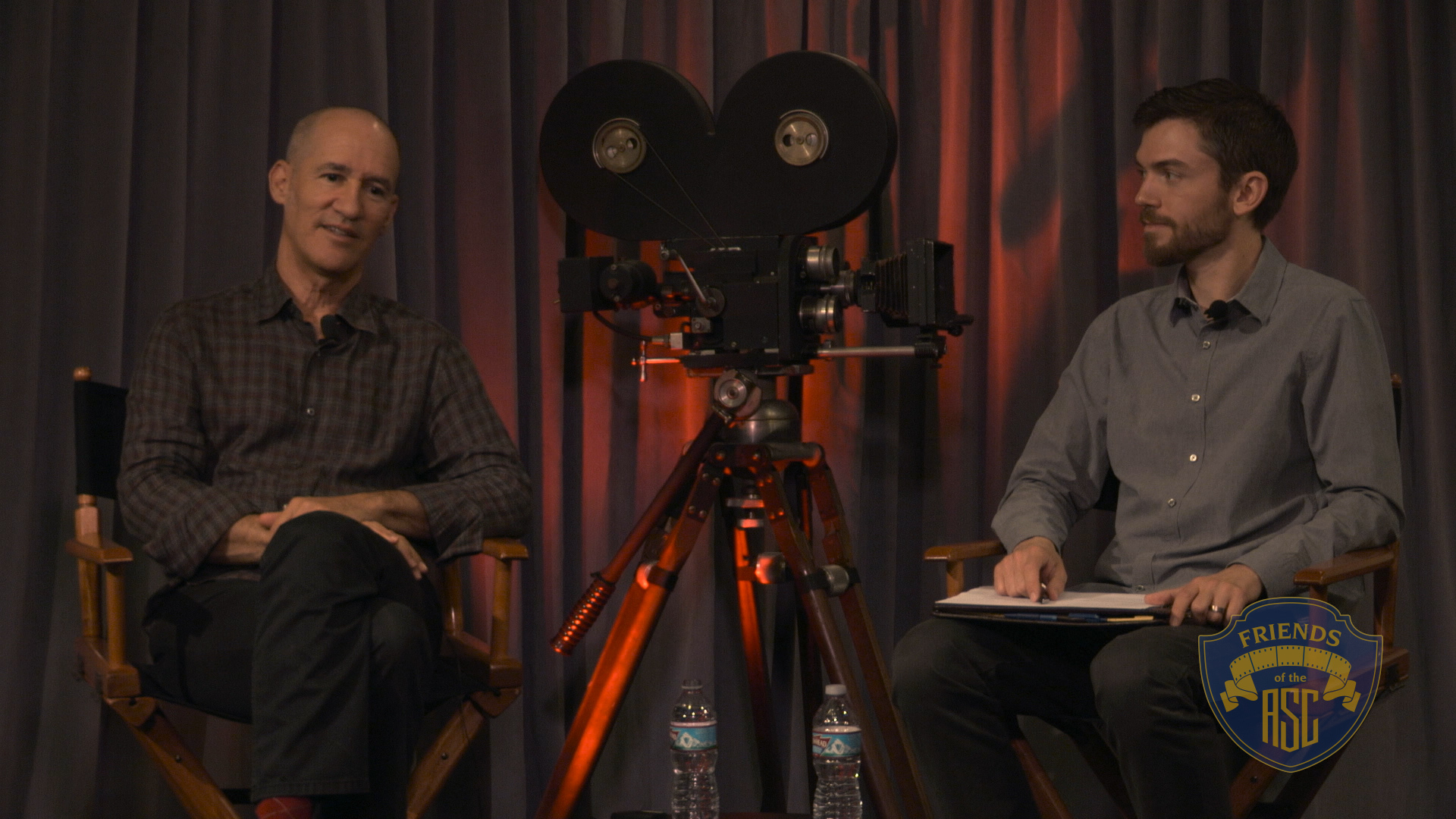
Schaefer discusses how his background in fine arts played an intricate role in pursuing the path to become a cinematographer, how he was brought onto The Paperboy and his collaboration process with director Lee Daniels, explains what it is like working with director, Christopher Guest, who has a lead role in front of the camera and he also discusses what it is like to shoot a documentary style film. He discusses the pre production process on Finding Neverland that he and director Marc Forster have developed and used on their last nine films together, and explains how using a DI helped to set the look of the film before implementing visual effects, and how using a Steadicam was the right tool to help invoke certain feelings.
He breaks down the lighting and camera processes he used in several scenes from Quantum of Solace, talks about the location scouting process, explains how he filmed fight scenes in Quantum of Solace and discusses how he works with the second unit to make sure their work matches.
- Introduction
- The Paperboy
- Best In Show
- The Pre Production Process
- Finding Neverland Part 1
- Finding Neverland Part 2
- Quantum of Solace Part 1
- Quantum of Solace Part 2
- Quantum of Solace Part 3
- Q&A Part 1
- Q&A Part 2
- Q&A Part 3
- Q&A Part 4
Roberto Schaefer, ASC, AIC is an acclaimed cinematographer of such films as Quantum of Solace, Monster’s Ball, The Kite Runner, and Finding Neverland,for which he earned a BAFTA nomination. He is a long-time collaborator of director Marc Forster, shooting nine of the director’s eleven feature films. In addition to his dramatic work, he has shot several “mocumentaries” for director Christopher Guest including, Best in Show, For Your Consideration, Waiting for Guffman and HBO’s Family Tree.
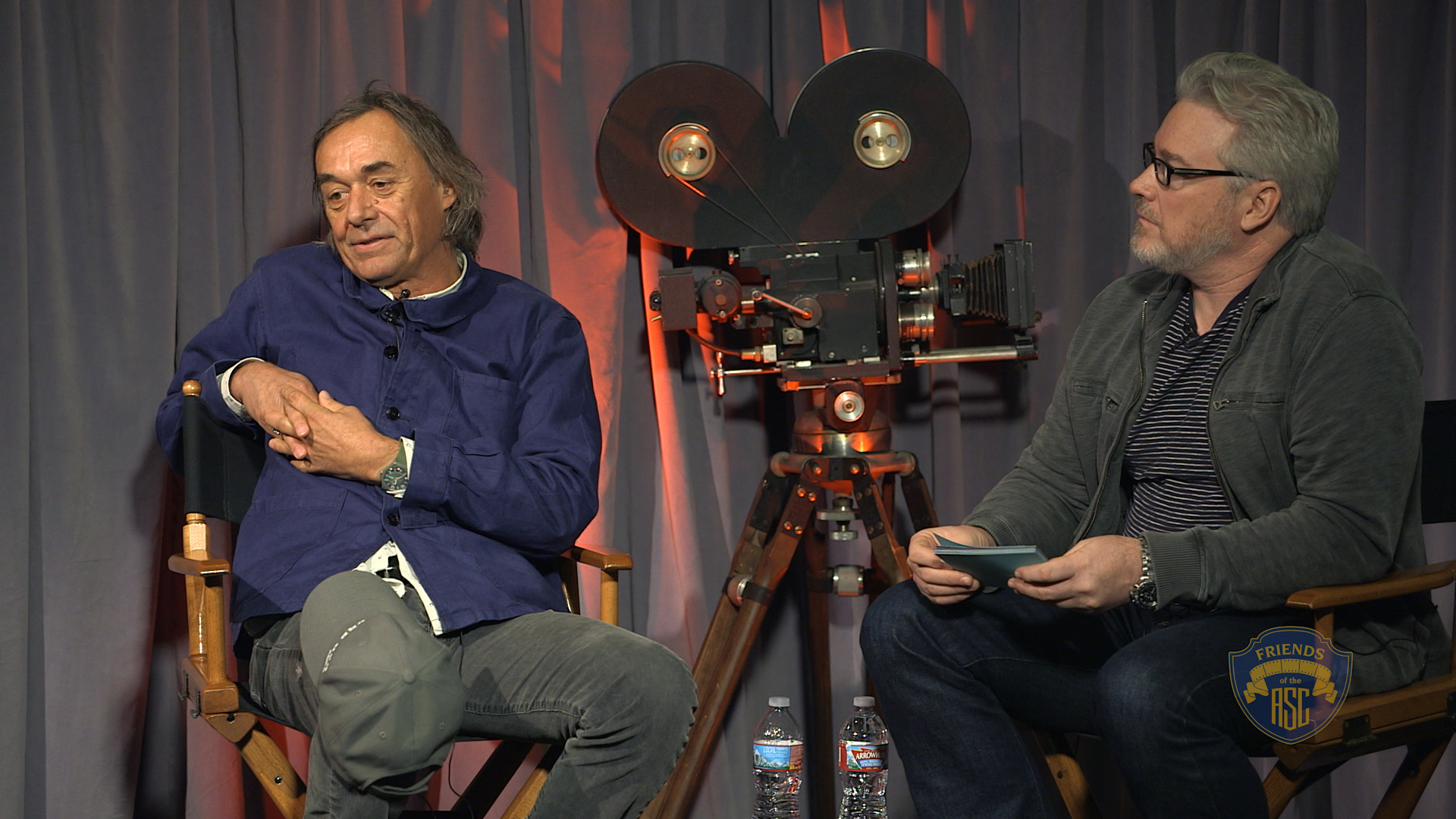
Wolski discusses the challenges involved in shooting a movie that revolves around one character, discusses the collaboration process with NASA and other scientists in order to be as scientifically factual as possible when creating the look of Mars, explains how he took a different approach to shooting scenes in order to have as much shot in camera opposed to green screen and describes how he chose to set the look for each scene.
He discusses the challenges of working with 3D and how finding the right crew was the key in making the 3D of The Martian work, explains his reasons for choosing certain lenses and the involvement he has in postproduction relating to the 3D Stereoscopic interocular distance, and how shooting in stereoscopic was necessary not only for 3D but also to allow more time in postproduction for visual effects. He also discusses how he and director Ridley Scott approach filming with multiple cameras and choose their setups to create something that is more visually interesting.

Cinematographer Checco Varese, ASC, and director Patricia Riggen explain how they portrayed The 33 in a visually realistic way. Varese discusses his artistic inspirations, and the 4 stages of designing and lighting the mine, and explains how he blocked actors in order to light other actors, as well as the logistical challenges of filming in a real mine. Varese and Riggen discuss a pivotal moment in the film when the miners are discovered, how they maintained the authenticity of the real-life rescue and the paintings of Caravaggio were used as visual references to determine the level of darkness, and explain, “less is more” when lighting in the mine, and how Varese’s heavy participation in the post process made the CGI shots look more realistic. Varese also explains how he drew from his background as a news cameraman in order to shoot the film.
- How to Portray The 33
- Lighting the Mine
- Using a Real Mine
- The Darkness of Caravaggio
- The Rescue
- Seeing Like a News Cameraman Part 1
- Seeing Like a News Cameraman Part 2
- Less is More
- The Not Deleted Scene
- Q&A 1
- Q&A 2
- Q&A 3
Born in Peru, Checco Varese, ASC, AMC, began his career shooting television news and documentaries for broadcast networks. In the mid-1990s he established himself as a leading director of photography, shooting hundreds of music videos, including the Dave Matthews Band’s “Crash” and Prince’s “Black Sweat,” for which he was nominated for an MTV Video Music Award. His cinematography credits include the upcoming feature The 33, as well as the TV projects The Strain, Point of Honor, Reign and Their Eyes Were Watching God, and the features The Aura and La Misma Luna.
Director Patricia Riggen was born in Guadalajara, Jalisco, Mexico. She began her career in journalism and documentaries. She received a Master’s degree in directing and screenwriting at Columbia University, and was the winner of the Student Academy Award for her film La milpa in 2002. Her other directorial credits include, La Misma Luna starring America Ferrera, Lemonade Mouth, Revolución and Girl in Progress starring Eva Mendes and Patricia Arquette.
